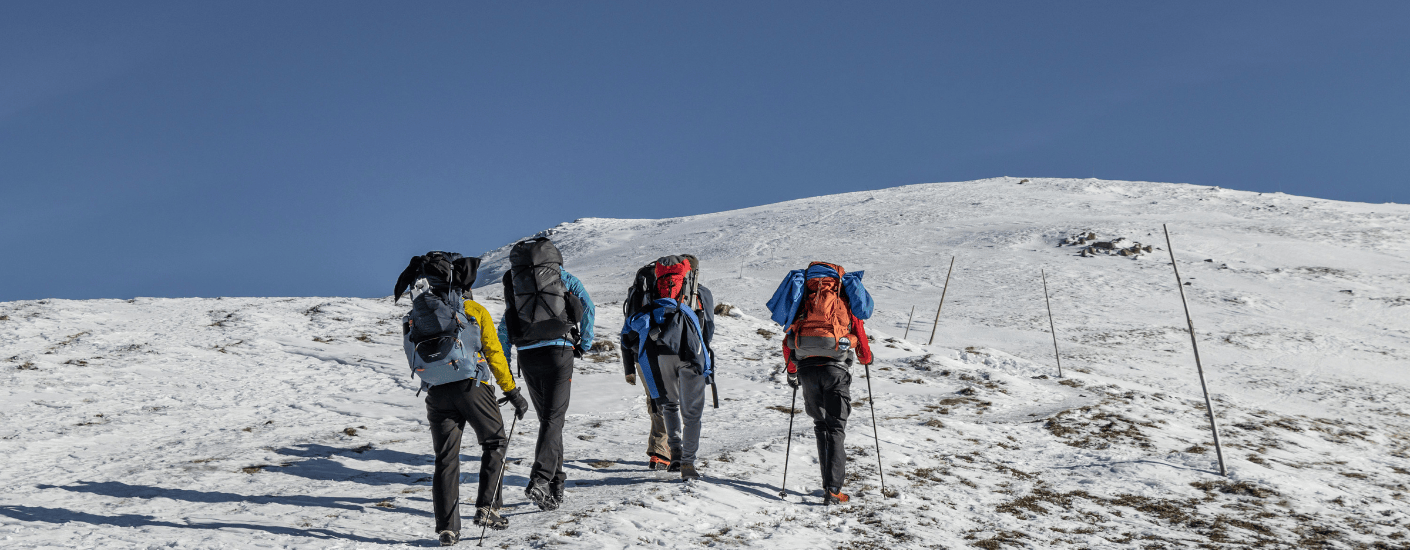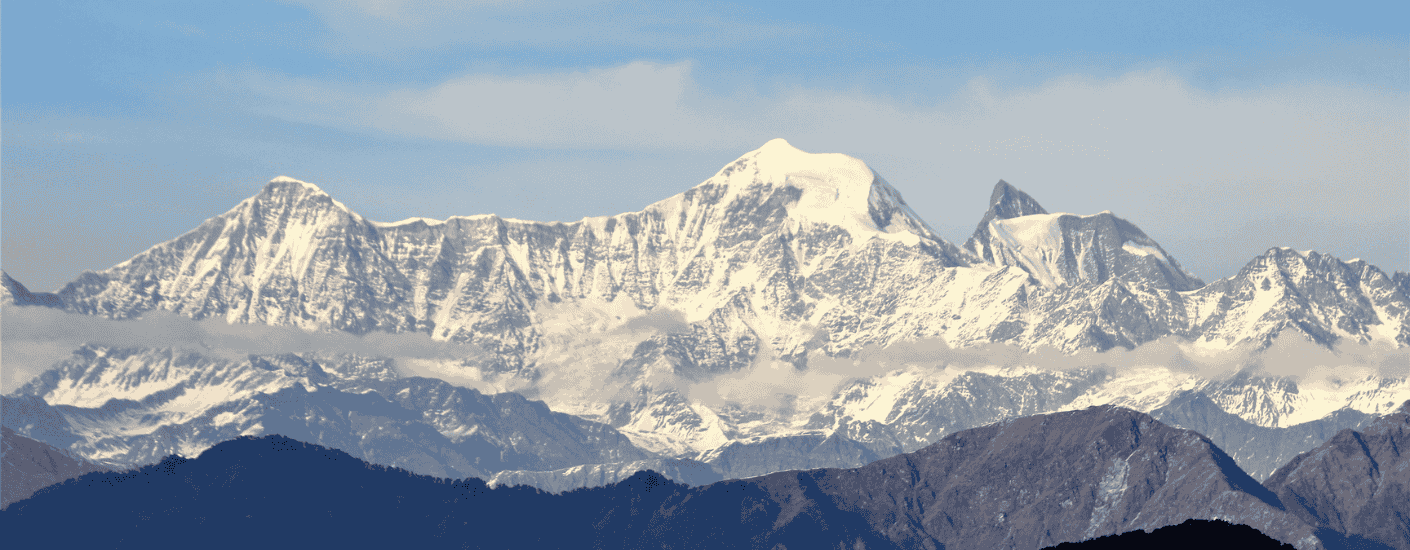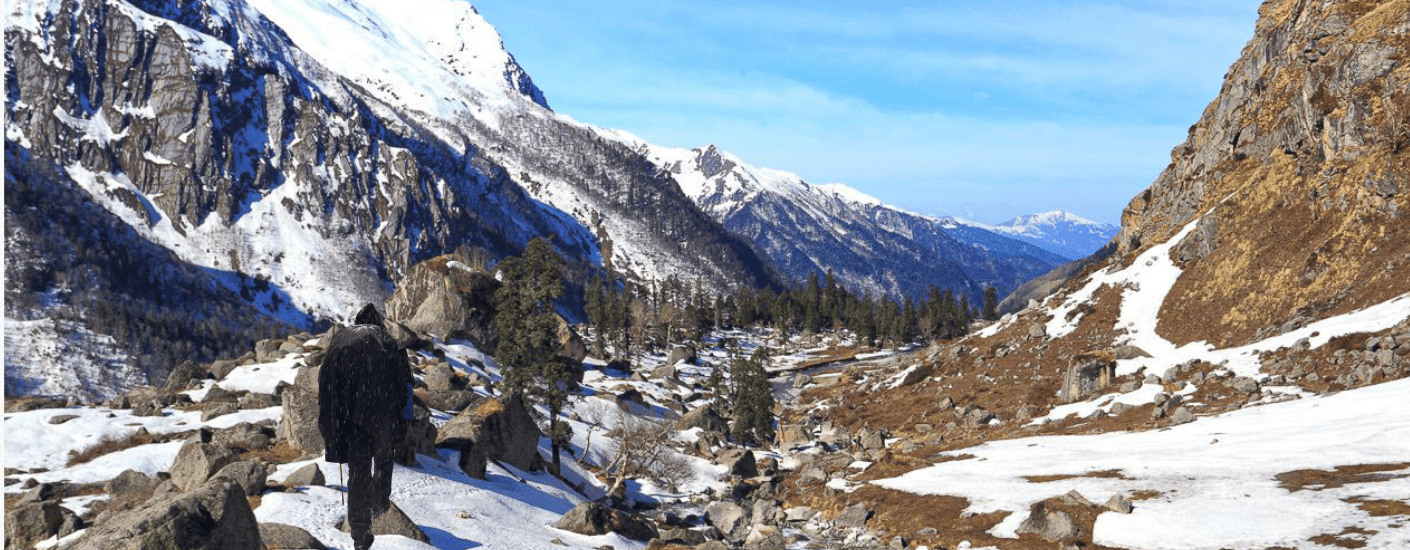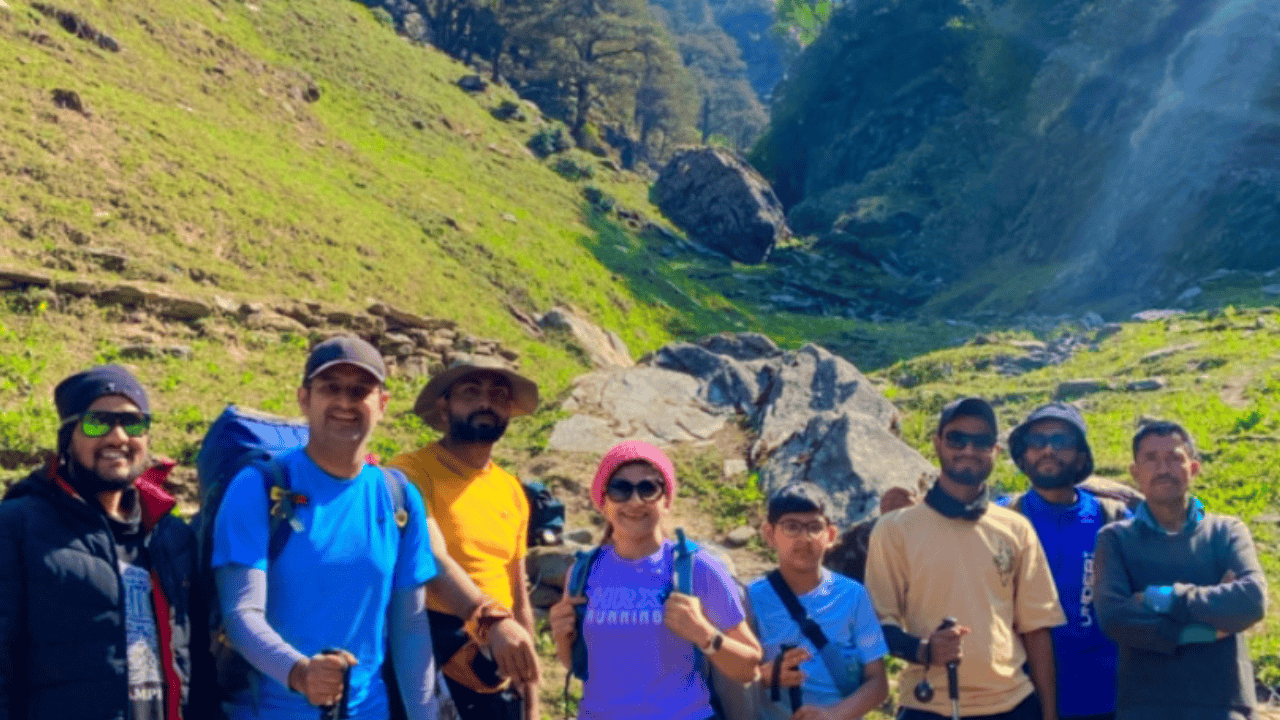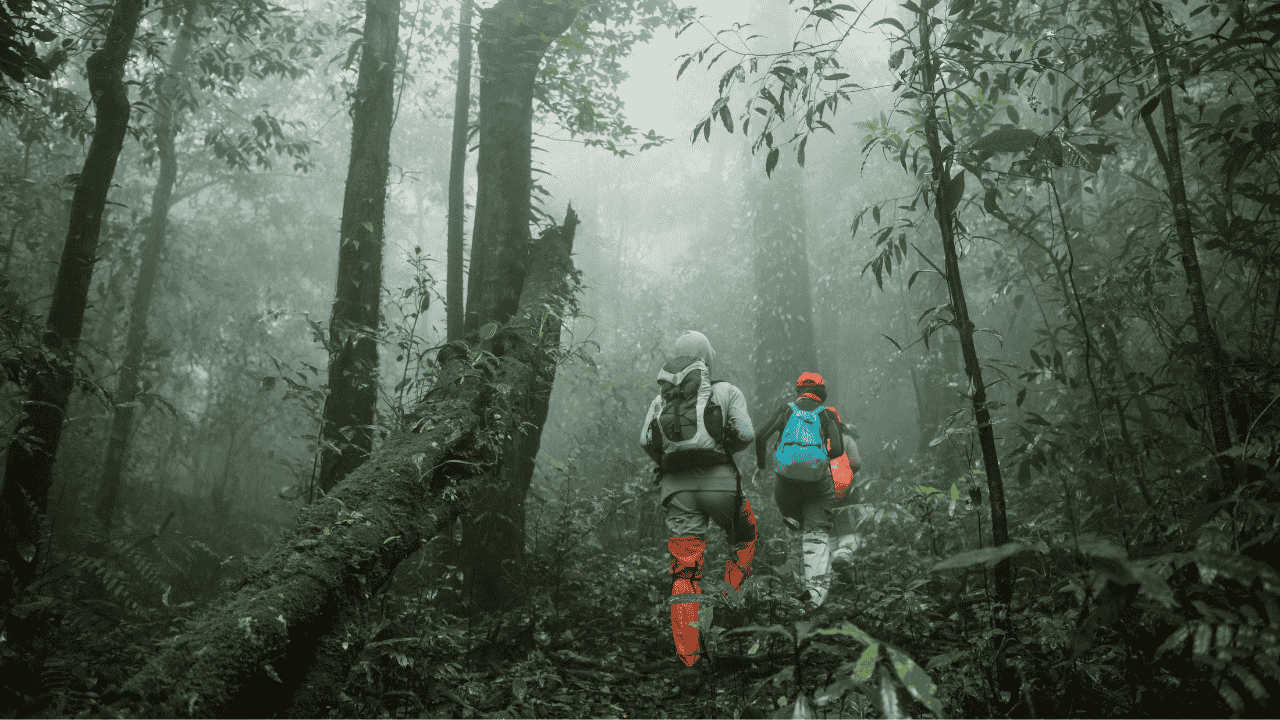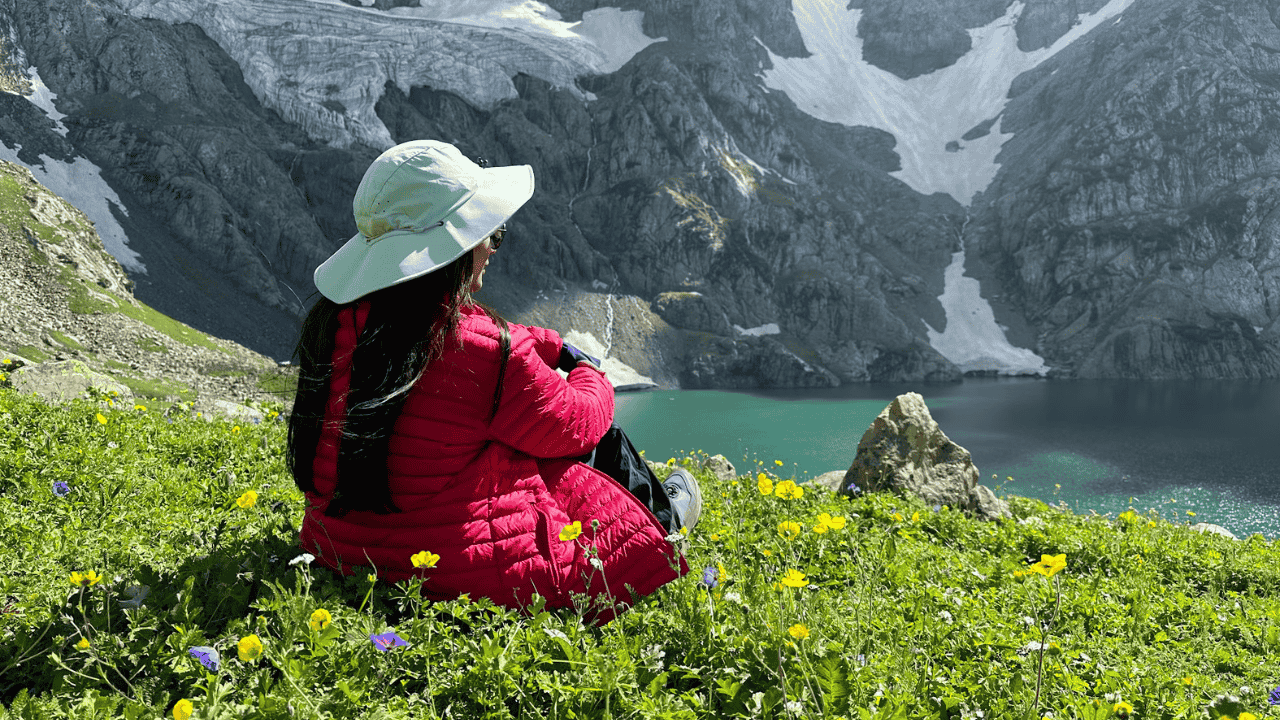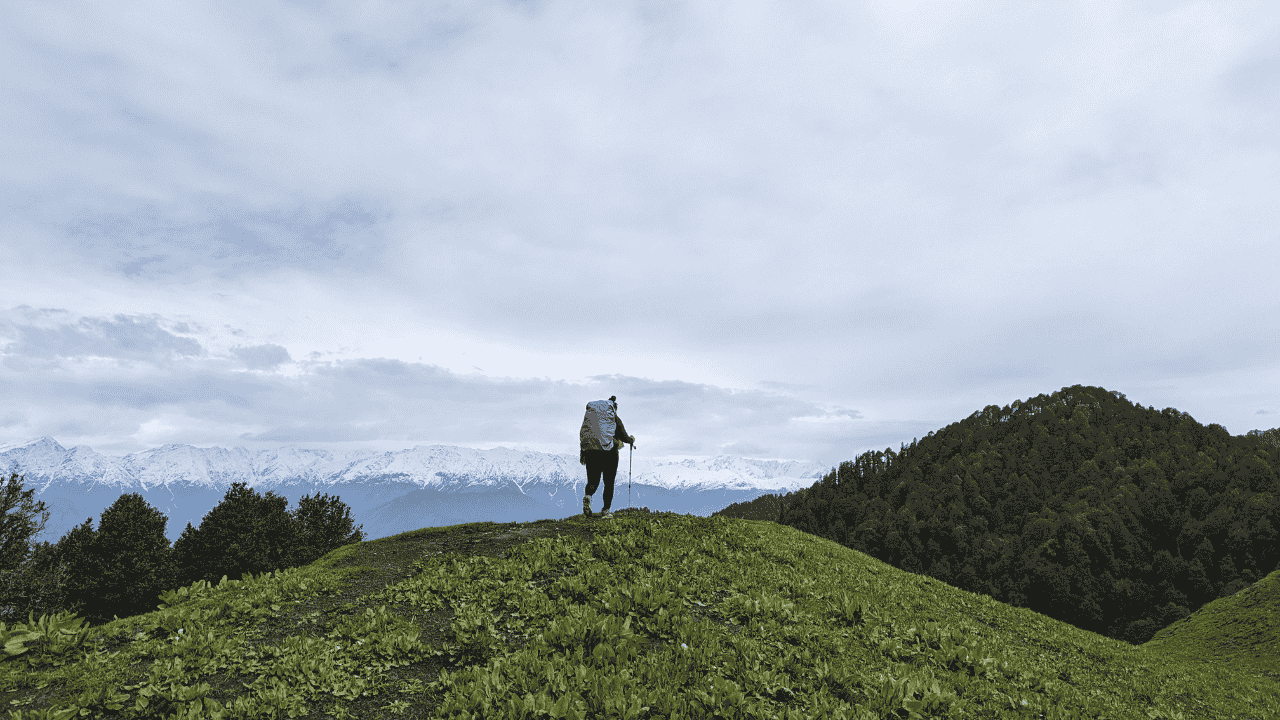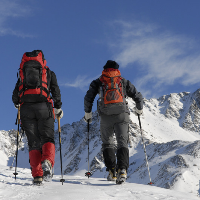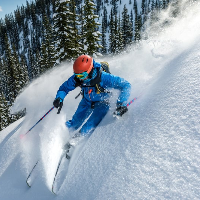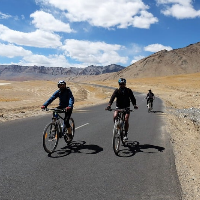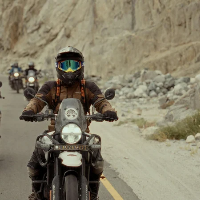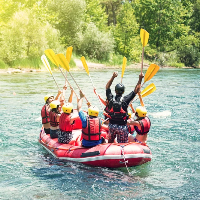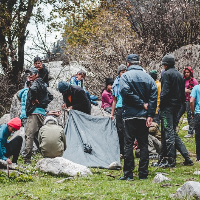Itinerary Description
Introduction
Auden’s Col trek is one of the most difficult and challenging treks in India. Auden’s col at an altitude of 5490 M, is gruesome in the western Himalayas. Auden Col lies between two massive glaciers named Khatling and Jogin. Auden’s col trek is the most bucket-listed trek among those who go on an expedition. It is in the most heavily glaciated areas of India. This pass is still one of the least explored passes in the country.
Auden’s Col trek is undeniably the most beautiful trail which links to Khatling and Rudra valley. It is filled with some great unprecedented unmatched views. Yet it is one of the most dangerous hostile trails. There are definitely no easy days here. Every day there is massive altitude gain. Crossing knee-deep crevasses, and walking on a high ridge is the toughest. Auden’s Col trek is the best for high-altitude Himalayan expeditions.
Best Time to Trek:
The best time for Auden’s Col trek is From June to September. Without any doubt, Auden’s col is a dream trek. But one must always keep in mind that this journey required a lot of acclimatization. From June to September, it is officially the summer season. The weather is quite favorable and pleasant. Peaks are visible and clear. Yet we highly recommend you carry woolen gear to keep you warm. As the temperature drops a lot during the evening. Especially after the post- monsoon the views of Auden’s col trek are mind-blowing. As the snow melts the huge dramatic shades of Himalayan peaks are visible.
Difficulty Level:
Auden’s col is a difficult trek. Almost every day you will have to cover 7-8 km. There is major altitude gain as well, for which reserve days are provided for acclimatization. We strongly recommend the trekkers to have prior experience before you opt for Auden’s Col trek. Within the span of 5 days you will climb from 10,000 ft to 18,000ft which is quite challenging. You will be crossing numerous crevasses, ridges and boulder sections too. Make sure that you are physically and mentally fit.
Short Itinerary
Dehradun (640 mts) to Gangotri (3415 mts) 245 km (8 to 9 hours)
Rest and acclimatization at Gangotri (3415 mts)
Gangotri (3415 mts) to Nala Camp (3760 mts) 7 km (5 hours)
Nala Camp (3760 mts) to Rudugaira Camp (4350 mts) 5 km (4 hours)
Rest and Acclimatization at Rudugaira Base Camp (4350 mts)
Rudugaira Base Camp (4350 mts) to Auden's Col Base Camp (4720 mts) via Gangotri Base Camp (4500 mts) 8 km (6 hours)
Auden's Col Base Camp (4720 mts) to Khatling Glacier Camp (5000 mts) via Auden's Col (5490 mts) 5 km (7 hours)
Khatling Glacier Camp (5000 mts) to Zero Point (3870 mts) 10 km (7 hours)
Rest Day at Zero Point (3870 mts)
Zero Point (3870 mts) to Chowki (3580 mts) 7 km (4 hours)
Chowki (3580 mts) to Masar Tal (4135 mts) 8 km (6 hours)
Masar Tal (4135 mts ) to Vasuki Tal (4135 mts ) via Mayali Pass (5000 mts ) 12 km (10 hours)
Vasuki Tal (4135 mts) to Kedarnath (3590 mts) 7 km (5 hours)
Kedarnath (3590 mts) to Gaurikund (1985 mts ) 14 km (6 hours)
Gaurikund (1985 mts) to Dehradun (640 mts) 252 km (9 hours)
Reserve Day
Detailed Itinerary
Day 1
Dehradun (640 mts) to Gangotri (3415 mts) 245 km (8 to 9 hours)
Highlight of the day: River Baghirathi and scenic drive in Uttarkashi.
Today you will need to reach Gangotri from Dehradun which is almost 8 to9 hours of drive. The most scenic drive in Uttarkashi district is Dehradun. We will be starting early in the morning so we can reach before the night falls. After reaching Ganatori we suggest you take enough rest to prepare your body for the next day.
Day 2
Rest and acclimatization at Gangotri (3415 mts)
Highlight of the day: explore Gangotri and rest.
Today which is day 2 is reserved as a rest and acclimatization day. You have your own time to explore the town of Gangotri and relax. You can cross-check your checklist and prepare for the next day. Overnight stay at Gangotri.
Day 3
Gangotri (3415 mts) to Nala Camp (3760 mts) 7 km (5 hours)
Highlight of the day: Majestic views of Gangotri III and Jogin II.
Today is day 3 and it involves treacherous and rough terrain. Starting from the grasslands to ascend 350 mts straight. From the southwest of Gangotri, you will walk down to the main valley for 2 km. the trail is through thick oak forest and birch forest. As you reach the Nala camp, you will see wider meadows with the most beautiful view of Gangotri III and Jogin II. overnight stay at the camp.
Day 4
Nala Camp (3760 mts) to Rudugaira Camp (4350 mts) 5 km (4 hours)
Highlight of the day: Majestic views of Gangotri I, II, III, and Jogin II,
Today is day 4. Even though 4kms might sound less but is more grueling. Because today there will be 600 mts ascend. Which means 600 mts altitude gain. The climb is quite steep. You will cross the streams and upper grazing grounds as you climb up to Rudugira. Overnight stay at Rudugira.
Day 5
Rest and Acclimatization at Rudugaira Base Camp (4350 mts)
Highlight of the day: Majestic views of Gangotri I, II, III, and Jogin II,
Today is day 5 and it is reserved as a rest day to acclimatize. It is quite necessary as you have gained a lot of altitude a day before. So after breakfast, you can go for a walk and acclimatize. Overnight stay at camp.
Day 6
Rudugaira Base Camp (4350 mts) to Auden's Col Base Camp (4720 mts) via Gangotri Base Camp (4500 mts) 8 km (6 hours)
Highlight of the day: Auden’s col basecamp, Gangotri III views, High altitude glacial lake named Sukha Tal.
Today is day 6 and it will be filled with high-altitude ascents. We will start early today. Our Gangotri basecamp is 4kms from our current campsite. From Gangotri to Auden’s col it's again 4km. It is one of the most strenuous stretches filled with moraine-covered snow. The views are just so splendid. Overnight stay at Gangotri basecamp.
Day 7
Auden's Col Base Camp (4720 mts) to Khatling Glacier Camp (5000 mts) via Auden's Col (5490 mts) 5 km (7 hours)
Highlight of the day: Auden’s Col and Khatling glacier.
Today is day 7 and even though the distance seems to be small but is one of the most tiring ones. As we start our day early we witness the confluence of 4 huge massifs: Jogin 1 and Gangotri III. the trail is complete, filled with moraine. The gradient is between 30-50 which requires a lot of caution. We will use rope for the steep patch of almost 1.5 km. then after that, the climb up to Col will take another 3 hours. You will witness massive glaciers, and icefalls in this region. Overnight stay at camp.
Day 8
Khatling Glacier Camp (5000 mts) to Zero Point (3870 mts) 10 km (7 hours)
Highlight of the day: Khatling glacier.
Today is day 8 and we are in a heavily glaciated region of India. Today is going to be the longest day of the expedition and the most challenging one. The whole path is filled with crevasses and moraines. There is a lot of loose gravel and scree and steep ascents. It is going to be really extreme.
Day 9
Rest Day at Zero Point (3870 mts)
Highlight of the day: Wander in zero point.
Today will be a rest day after a couple of strenuous days.
Day 10
Zero Point (3870 mts) to Chowki (3580 mts) 7 km (4 hours)
Highlight of the day: welcome to civilizations of Grassland.
Today is day 10 and it is a sort of relaxing day. As we will leave the snowy land and reach vast green meadows. The temperatures get warmer too. Overnight stay at the campsite.
Day 11
Chowki (3580 mts) to Masar Tal (4135 mts) 8 km (6 hours)
Highlight of the day: The glacial lake.
Today will be day 11, we will start early. It will begin with steep ascents with the view of Thalay sagar at an altitude of 6904 mts. The views are astounding. After the initial ascent, we cross the ridge and reach Masar tal. Overnight stay at camp.
Day 12
Masar Tal (4135 mts ) to Vasuki Tal (4135 mts ) via Mayali Pass (5000 mts ) 12 km (10 hours)
Highlight of the day: The glacial lake and Mayali pass.
Today is day 12 and we will be crossing the most beautiful gem of Uttarakhand which is Mayali pass. Today's trail has a lot of steep ascents with boulder crossing over the ridge. From Mayali pass the descent starts and it's dangerous. We will be using rope for the crossing for rappelling. Vasuki tal is famous for Brahama kamal and other Himalayan flowers. It is believed that according to Hindu mythology, Lord Vishu took a bath here on the auspicious day of Rakshabandhan. Overnight stay at Vasuki tal camp.
Day 13
Vasuki Tal (4135 mts) to Kedarnath (3590 mts) 7 km (5 hours)
Highlight of the day: The shrine of Kedarnath.
Trek: Today is day 13 and it is not a challenging day. In fact, it's smaller as compared to the other days. It will take 3 to 4 hours to reach Kedarnath from Vasuki tal. Kedarnath is one of the most holiest pilgrimage spots among Hindus. It hold a great importance and sanctity in Hindu religion. In the evening we will visit the shrine and relax.
Day 14
Kedarnath (3590 mts) to Gaurikund (1985 mts ) 14 km (6 hours)
Highlight of the day: Well-marked easy trails.
Today is day 14 and we will start to descend its well-marked trail to Gaurikund. You can visit the temple of shiva and parvati which is situated here. Intrestingkt, this place has lots of myths associated with it too. Such as Shiva accpted to marry parvati at this place. Overnight stay.
Day 15
Gaurikund (1985 mts) to Dehradun (640 mts) 252 km (9 hours)
Highlight of the day: Explore the cafes and relax.
Today is day 15 and it will be a long drive day. We will leave early morning so we reach Dehradun before sunset. You will be reaching Dehradun by late evening. Also, if you have enough time you can visit the Paltan bazaar of Dehradun and go shopping too. You could either relax at Dehradun and treat yourself to cozy cafes or you can take the bus to your respective destination.
Day 16
Reserve Day
Reserve day is an extra day if there is any unfavorable weather situation. You might have to pay a certain amount (5000) to the trek leader for a day extra.
WHAT'S INCLUDED
- ●Meals during the trek (Day 2 Lunch till Day 13 Dinner)
- ●Hotel stay Gangotri, Kedarnath, Gauri Kund on double or triple sharing basis
- ●Experience and Mountaineering course Certified expedition Leader
- ●Forest Permits/Camping Charges, if any (Upto the amount charged for Indian nationals)
- ●Certified and Experience Expedition guide, Experience cook, helpers, and porters for carrying common supplies
- ●Tents on twin sharing basis, Sleeping bags, mats
- ●All Technical & safety equipment - as required, depending upon snow conditions like (Ice Axe, Carabiners, Harness, Rope, Pulley, Micro-spikes, Gaiters, Helmets, Etc)
- ●First aid medical kits and oxygen cylinder
WHAT'S NOT INCLUDED
- ●Meals during Hotel and road journeys
- ●Forest Charge for carrying still/Video Camra
- ●Cost of any kind of Insurance. Since insurance is mandatory, kindly get yourself insured from our partners ASC360 through www.asc360.com
- ●Portage of personal bags during the trek.
- ●Any Expense of personal nature.
- ●Any Expense not specified in the inclusions list.
Are you eligible for this adventure?
Annapurna Base Camp Trek takes you to a height of 4,130M and is rated a moderate level trek for its long trekking distances. For its elevation and distances, it is recommended for trekkers with some prior experience in the high-altitudes.
Grade
Difficult
Max Altitude
5490 mts
Distance
75 km

WMRS Level Required

Terrain

Prerequisite Skills

Fitness Benchmark
WMRS Level Required
WMRS 6
Annapurna Base Camp Trek is a level 4 adventure on the Bikat Rating Scale.
This makes it mandatory for you to have high-altitude experience of preferably multiple treks marked at level 3 on the WMRS. The altitude, the terrain, and the nature of the climb demand a certain level of endurance and a need for you to be aware of how your body reacts to the various features of the high-altitude environment.
If you do not know what level of WMRS trek would suit you best, worry not! Fill out this Form:
We will send you a progression chart to help you comfortably get out of your comfort zone in order to level up and ultimately reach your highest potential in the big, bad world of outdoor adventure.
Packing List
This is a list of essential items for individuals going on a trek with Wanderin’ Man Adventures. This list contains only those items which the participants are required to bring with them. The list excludes those items which are provided by Wanderin’ Man Adventures on the trek. We have divided the items into five categories. All the items in the list are essential except for those marked as optional.
🟩 Trekking Gear
- Rucksack bag with rain cover
- Day Pack Bag - Recommended for treks with summit day
- Head Torch with spare Batteries
- UV protection sunglasses
- Water Bottles - 2 bottles of 1 liter each
🟩 Footwear
- Non-skid, deep tread, high-ankle trekking shoes - 1
- Pair of light weight Slipper/Sandals for the campsite - 1
🟩 Clothing
- Quick Dry Warm lower or Track Pants - 2
- Full sleeves T-shirts/Sweatshirts (1 for every 2 days of trekking)
- Pair of thick woolen socks (1 pair for every two days of trekking)
- Thermal Body warmer Upper & Lower - 1
- Undergarments (1 for each day of the itinerary)
- Warm jacket closed at wrist & neck - 1
- Full sleeves sweater - 1
- Rain wear (Jacket & Pants) - 1
- Pair of water-proof, warm gloves - 1
- Woolen cap - 1
- Sun shielding Hat - 1
- Multipurpose Buff - 2
🟩 Toiletries
- Personal toiletries kit (Small Towel, Toilet paper, paper soap, Bar soap, toothbrush, toothpaste, cold cream, etc.)
- Sun screen lotion small pack (SPF 30 & Above) - 1
- Lip Balm small pack - 1
🟩 Utensils
- Small size, Lightweight & Leak proof lunch box - 1
- Plate - 1
- Spoon - 1
- Tea/Coffee (plastic) Mug - 1
🟩 Miscellaneous
- Camera (Optional)
- Carry your medicines in plenty in case you have any specific ailment. Consult your doctor before joining the trek.
- Dry fruits, Nuts, Chocolate bars (Optional)
Note-
- For long treks, please carry a spare sunglasses.
- For winter trek please try to carry a thermal water bottle.
- For long winter treks, please carry an extra pair of warm pants.
Frequently Asked Questions
Why Wanderin Man?
(SET- Safety, Expertise & Trust )

Safety
- ●Small Group Size in the ratio of 6:1 (participant to leader)
- ●No compromise on safety and sustainability promise
- ●Experienced and Certified Mountaineering Professional Leaders
- ●Region Mapped with Emergency Evacuation Plan
- ●Certified Standard Equipment by UIAA (International Climbing and Mountaineering Federation certification) & other Similar Bodies
- ●Minimized Risk Management Standard Operating Procedure are applied for every Trek and tour
- ●Certified First Aid Support and Doctors* with constant availability of Safety Equipments like Medical Kit, Rescue Kit
- ●Constant communication is aided with the help of Communication Devices
- ●Certified and registered Transporter for transportation purpose

Expertise
- ●Founders of the company have extensive experience of 15 years having organized approx 2000+ trekking, Expeditions and other adventure activities.
- ●Wanderin’ Man Adventures operating expeditions above 8000 mts.
- ●Under the umbrella of Wanderin’ Man Adventures 15 + adventure activities Programs have been organized
- ●Founders have mountaineering certifications from the esteemed mountaineering institutes of India.
- ●Team is composed of experienced mountaineers and trek leaders with thorough understanding of norms and procedures.

Trust
- ●Trust has been the hallmark of our company since its inception be it any program on the list.
- ●Special emphasis is laid on the use of standard procedures and equipments as per the mountaineering norms
- ●95% of our clients have availed our service on repeat basis.
- ●Our business has expanded primarily based on the “word of mouth” from our existing clients to new ones
What Our Customers Say
Cancellation Policy
Cash Refund (All events including Friendship Peak Expedition except other Mountaineering Expeditions) - Cash refunds are only available for bookings made without any discounts, such as promotional codes or dynamic discounts. Additionally, cash refunds are not available for shifted batch bookings or if the booking status is "Booked". The amount of the refund will be determined based on the following guidelines:
Cancellations made up to 45 days before the departure date
Cancellations made up to 31 days before the departure date
Cancellations made between 30 and 21 days before the departure date
Cancellations made between 20 and 11 days before the departure date
Cancellations made less than 11 days before the departure date are not eligible for a cash refund.
Similar Adventures
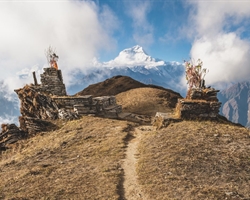
Khopra Ridge Trek
Less popular, less crowded, more beautiful alternative to ABC
- Nepal
- 10 Days
- BRS 4
- 4767 m
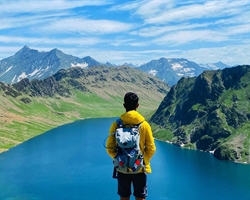
Tarsar Marsar Trek
A Shorter and Easier Alternative to the Kashmir Great Lakes Trek
- Kashmir
- 7 Days
- BRS 4
- 4024 m

Hampta Pass Trek
An Enchanting Cross-Over from Manali to Spiti
- Himachal
- 5 Days
- BRS 4
- 4200 m
 Max Participants :
8
Max Participants :
8
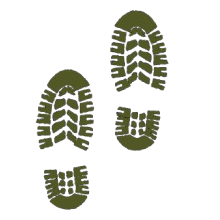 Trail Type :
Cross over trail, Start one valley, cross the pass, and end to another valley
Trail Type :
Cross over trail, Start one valley, cross the pass, and end to another valley
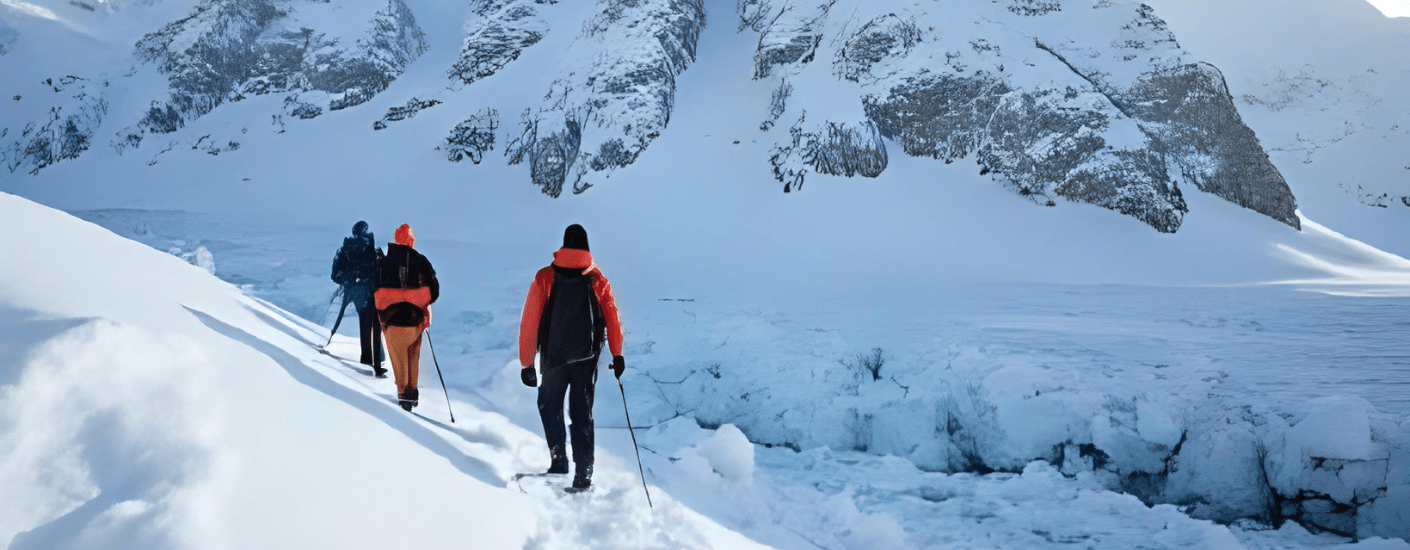



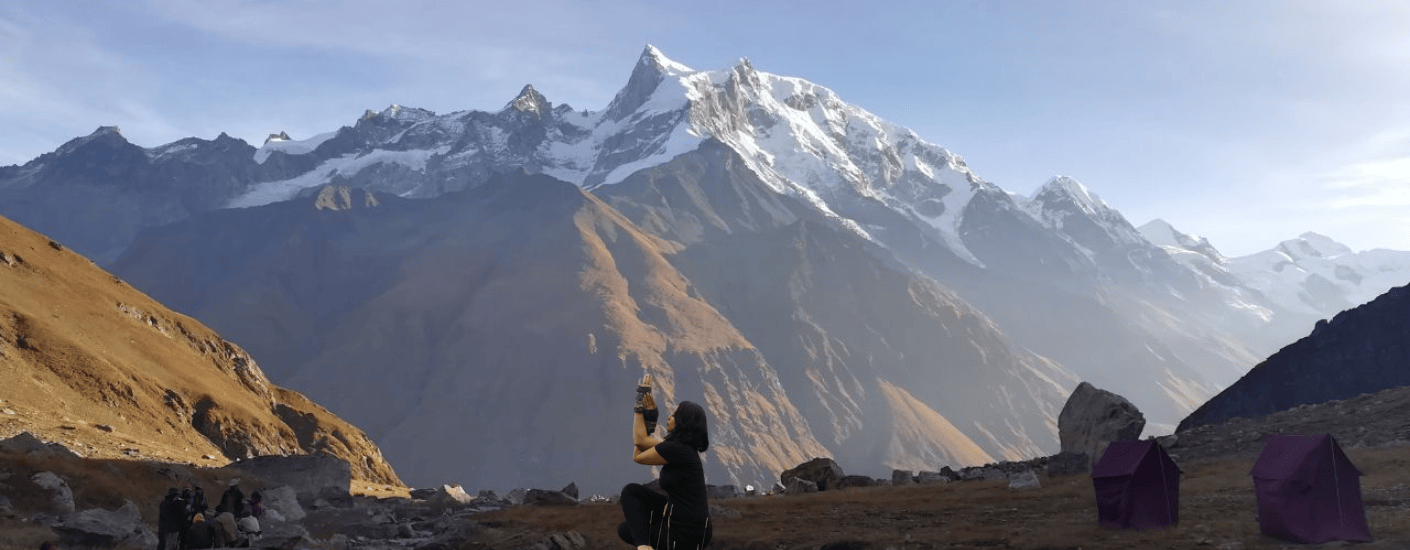

.png)
